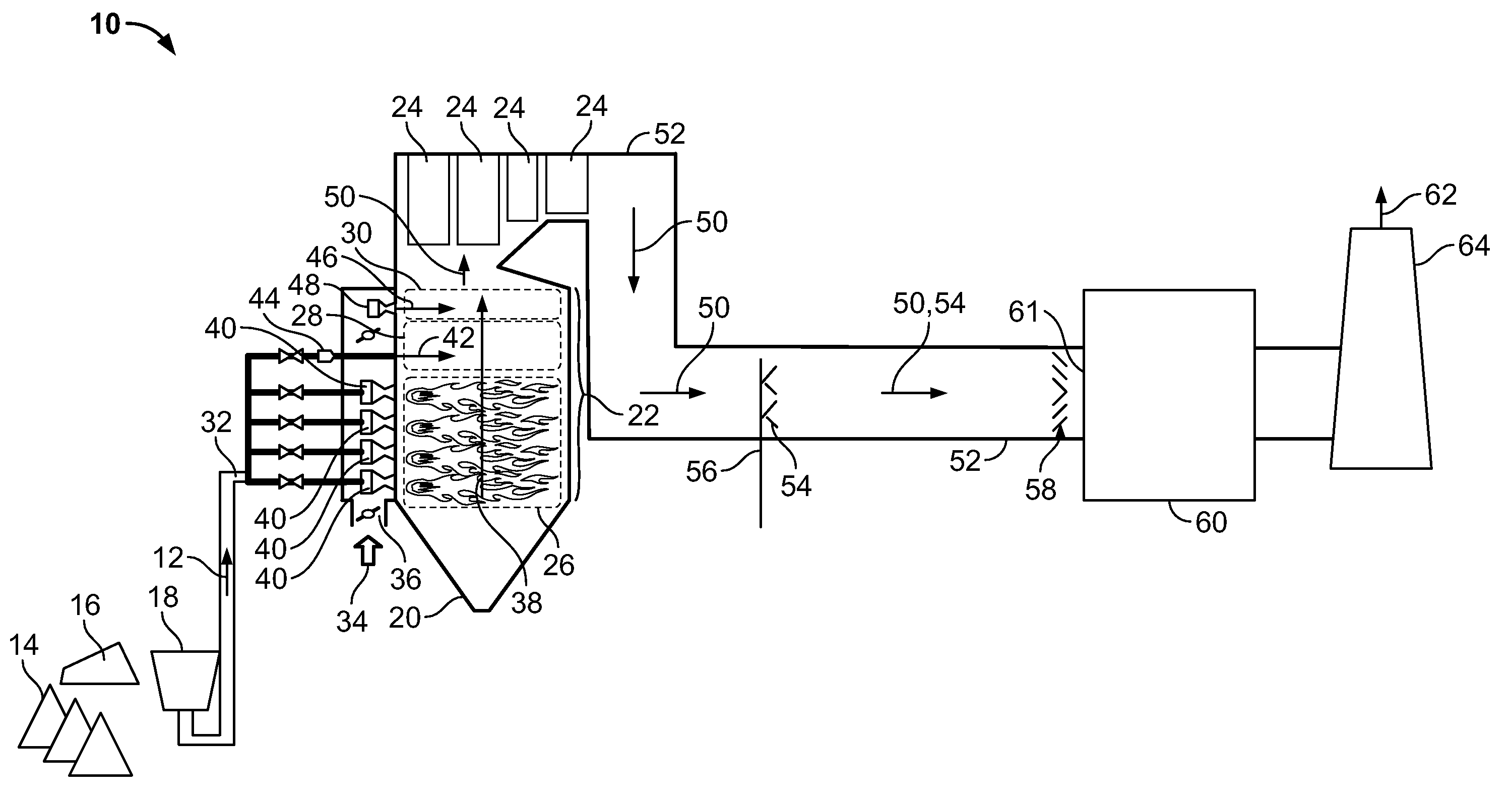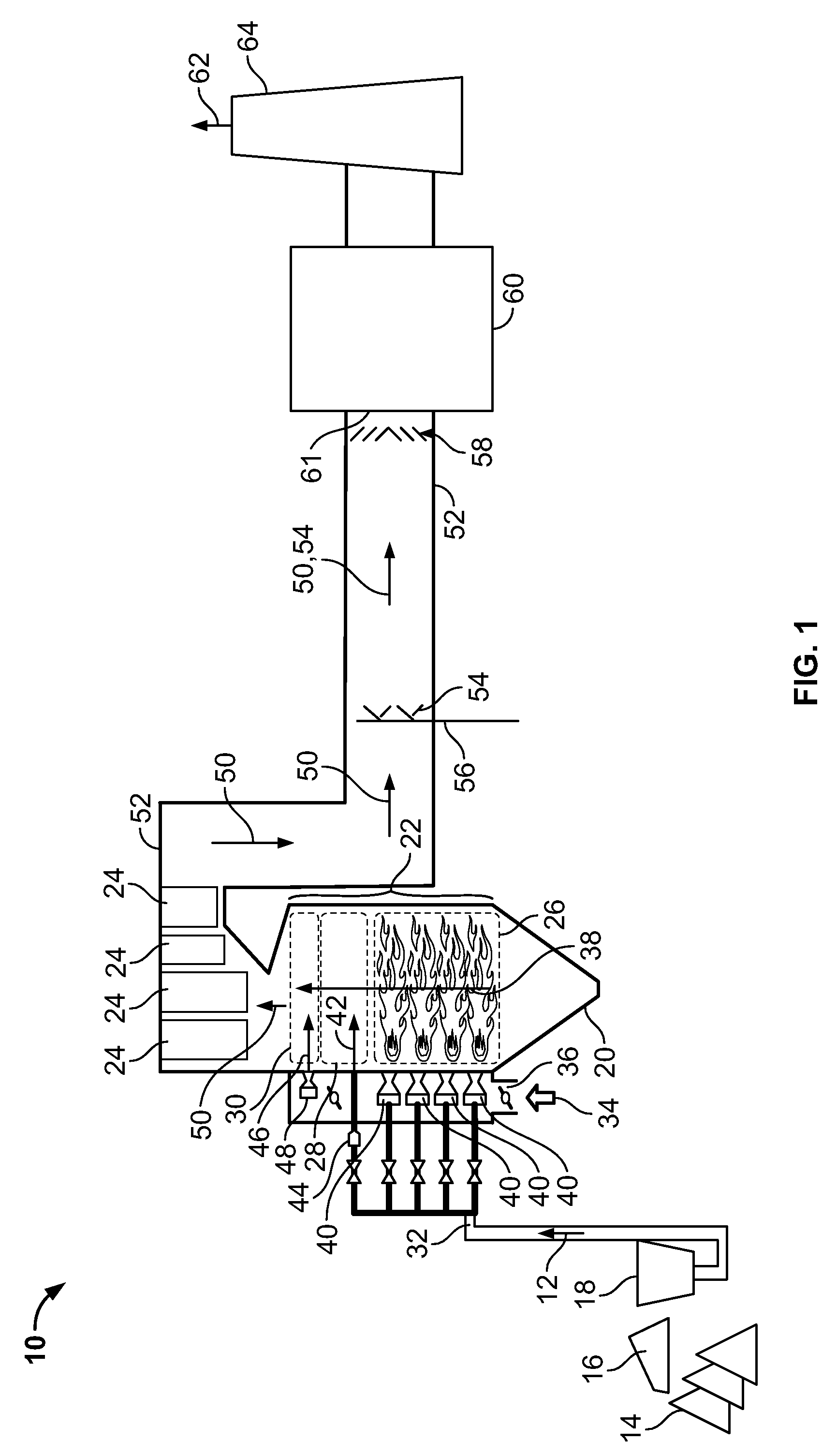Method and apparatus for removing mercury from combustion exhaust gas
a technology of combustion exhaust gas and mercury removal, which is applied in the direction of antimony compounds, machines/engines, arsenic compounds, etc., can solve the problems of methylmercury being toxic to humans, affecting the health of people, and accumulating in the environment, so as to reduce mercury emissions and create turbulence
- Summary
- Abstract
- Description
- Claims
- Application Information
AI Technical Summary
Benefits of technology
Problems solved by technology
Method used
Image
Examples
Embodiment Construction
[0014]FIG. 1 is a schematic view of an exemplary power plant system 10. In the exemplary embodiment, system 10 is supplied with fuel 12 in the form of coal 14. More specifically, in the exemplary embodiment, the coal 14 is bituminous coal, such as, but not limited to, Powder River Basin (PRB) coal, lignite coal, and / or any other suitable coal that enables system 10 to function as described herein. Alternatively, fuel 12 may be any other suitable fuel, such as, but not limited to, oil, natural gas, biomass, waste, or any other fossil or renewable fuel. In the exemplary embodiment, coal 14 is supplied to system 10 from a coal supply 16 is processed in a coal mill 18. In the exemplary embodiment, coal 14 is pulverized in coal mill 18 to form coal particles (not shown) having a predetermined and selectable fineness.
[0015]In the exemplary embodiment, coal fineness is measured using a known sieve analysis method. Alternatively, coal fineness may be measured using any other suitable method...
PUM
| Property | Measurement | Unit |
|---|---|---|
| temperatures | aaaaa | aaaaa |
| diameter | aaaaa | aaaaa |
| temperature | aaaaa | aaaaa |
Abstract
Description
Claims
Application Information
 Login to View More
Login to View More - R&D
- Intellectual Property
- Life Sciences
- Materials
- Tech Scout
- Unparalleled Data Quality
- Higher Quality Content
- 60% Fewer Hallucinations
Browse by: Latest US Patents, China's latest patents, Technical Efficacy Thesaurus, Application Domain, Technology Topic, Popular Technical Reports.
© 2025 PatSnap. All rights reserved.Legal|Privacy policy|Modern Slavery Act Transparency Statement|Sitemap|About US| Contact US: help@patsnap.com


